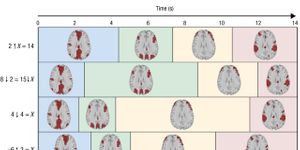Scientists have long sought to understand the role of so-called junk DNA. Made up of long stretches of non-coding sequence, their function was not only unknown, many theorized that these parts of DNA were leftovers, accumulated as DNA changed and evolved, and that it had no real role. More recent work shows that is not the case, however. It appears to at least have an important regulatory function in gene expression.
Research has also suggested that it plays a part in evolution as well. Body shape is an excellent example of that idea. “There’s an immense amount of variation in body length across vertebrates, but within species the number of ribs and so forth stays almost exactly the same,” developmental biologist Valerie Wilson of the University of Edinburgh told Science News. “There must be some ways to alter the expression of those [genes] regulating evolution to generate this massive amount of variation that we see across the vertebrates.”
New work led by developmental biologist Moises Mallo of the Gulbenkian Institute of Science in Oeiras, Portugal and published in Developmental Cell has used a special mutant mouse to delve deeper into questions junk DNA has inspired. That mouse had grown 24 sets of ribs instead of the typical 13. It was noted that, like snakes, those ribs extended all the way down the backbone to the hind legs.
It was determined that the mice carried a mutation in a gene called GDF11. That gene functions as a brake on another gene – OCT4. Without GDF11 present, there was nothing to reduce the activity of OCT4, so the mice developed extra vertebrae and ribs.
While the OCT4 gene itself is similar among humans, mice and snakes, the noncoding DNA surrounding the gene is different in snakes compared to the other species. The researchers engineered a transgenic mouse that used the non-coding region near the snake OCT4 gene, and when inserted into the mouse genome, there was continuous expression of that inserted sequence. The resulting embryos grew a lot of extra spinal cord, which supports the idea that the non-coding DNA has a regulatory function.
Other investigators would like to see additional confirmation of these findings in other ways before drawing definitive conclusions. Snakes however, will probably not be genetically engineered anytime soon to see if the opposite effect could be produced. There is currently no method that accesses snake embryos, so they cannot be genetically engineered.
Developmental biologist Michael Richardson of Leiden University, who is also a snake specialist, suggests OCT4 may be another indication that evolution uses noncoding DNA to alter anatomy. “We know that often times it’s not the gene itself that changed - it’s the flanking regions or the regulatory regions,” Richardson told Science News. “What they’ve shown quite clearly here is that the OCT4 gene isn’t different but the timing [of its expression] is prolonged.”
Sources:
Science News,
Developmental Cell










